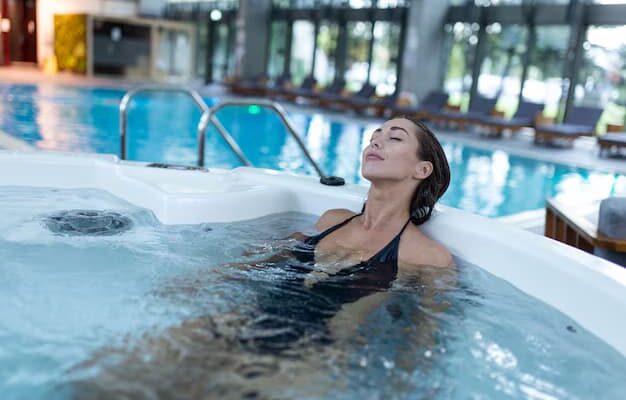In recent years, the practice of cold plunging has gained significant traction among athletes, fitness enthusiasts, and wellness advocates alike. This ancient technique, which involves immersing the body in cold water for a short duration, has been shown to offer a myriad of physical and mental benefits. With its roots tracing back to various cultures that sought natural methods for healing and rejuvenation, the cold plunge has emerged as a powerful tool in modern recovery protocols. This article delves into the key benefits of cold plunging, focusing on how it aids recovery and reduces inflammation.
Table of Contents
ToggleUnderstanding Cold Plunge Therapy
Cold plunge therapy is more than just a trend; it encompasses a range of practices that utilize cold water immersion to stimulate the body’s recovery processes. The science behind this practice is rooted in the body’s physiological responses to cold exposure. When a person immerses themselves in cold water, the body undergoes a series of changes designed to preserve core temperature and protect vital organs. Blood vessels constrict, reducing blood flow to the extremities, which helps to minimize inflammation.
This constriction triggers a cascade of biological reactions. As the body warms up post-immersion, blood vessels dilate, allowing for increased circulation. This process helps flush out metabolic waste, delivers oxygen-rich blood to tissues, and promotes the healing of muscles and joints. For athletes, this means reduced soreness and faster recovery times after intense workouts or competitions.
Boosting Recovery Through Cold Exposure
The recovery benefits of cold plunging are particularly pronounced in high-intensity sports and strenuous physical activities. Athletes often experience delayed onset muscle soreness (DOMS) following intense training sessions. Cold exposure can alleviate these symptoms significantly. Research has shown that athletes who engage in cold water immersion after workouts report lower levels of soreness compared to those who do not.
Moreover, cold plunges can enhance overall athletic performance by enabling quicker recovery between training sessions. This not only helps athletes maintain their training schedules but also reduces the risk of overtraining and injury. By incorporating cold plunging into their recovery regimen, athletes can train harder and longer, ultimately leading to improved performance outcomes.
Reducing Inflammation: A Natural Anti-Inflammatory
Inflammation is a natural response of the body to injury or stress; however, chronic inflammation can lead to various health issues, including joint pain, cardiovascular disease, and other inflammatory conditions. Cold plunging serves as an effective natural anti-inflammatory treatment. The cold water immersion helps reduce swelling and inflammation in the body, providing relief to individuals suffering from various inflammatory conditions.
A study published in the Journal of Sports Science and Medicine highlighted the anti-inflammatory effects of cold water immersion, demonstrating that participants who engaged in cold plunges exhibited lower levels of inflammatory markers in their blood. This finding is particularly relevant for individuals with conditions such as arthritis or chronic pain, who may find traditional treatments insufficient or laden with side effects.
Mental Health Benefits of Cold Plunging
While the physical benefits of cold plunging are well-documented, the mental health advantages are equally compelling. The shock of cold water can stimulate the release of endorphins, the body’s natural feel-good hormones. This can lead to improved mood and reduced feelings of anxiety and depression. Many practitioners of cold plunging report a sense of euphoria and heightened alertness following their sessions, which can be attributed to the physiological responses that occur during and after immersion.
Additionally, cold plunging can foster resilience and mental toughness. The act of willingly subjecting oneself to cold water challenges the mind and body, teaching individuals to manage discomfort and stress. This develops a mindset that can be beneficial in various aspects of life, from athletic pursuits to everyday challenges. As individuals learn to embrace discomfort through cold plunging, they often find themselves better equipped to handle stressors outside of the plunge pool.
Practical Considerations for Cold Plunging
For those interested in incorporating cold plunging into their recovery routine, there are several practical considerations to keep in mind. First and foremost, it is essential to listen to one’s body. Beginners should start with shorter durations in cold water and gradually increase their exposure as tolerance builds. Typical recommendations suggest starting with five to ten minutes and adjusting based on individual comfort levels.
Choosing the right temperature is also crucial. While specific temperatures may vary, most practitioners recommend water temperatures between 50°F and 59°F (10°C to 15°C) for effective recovery benefits. It is essential to ensure that the plunge is conducted in a safe environment, with proper supervision if necessary, especially for those new to the practice.
Conclusion
The resurgence of cold plunging as a recovery tool highlights its potential to transform the way athletes and fitness enthusiasts approach their post-workout routines. With benefits ranging from enhanced recovery and reduced inflammation to improved mental health, cold plunging has earned its place in modern wellness practices. Individuals looking to optimize their recovery protocols would benefit from exploring this ancient technique. For those interested in diving deeper into the world of recovery, Prime Recovery offers comprehensive resources and guidance on how to effectively incorporate cold plunges into one’s routine, ensuring that the journey towards improved health and performance is both effective and enjoyable.
